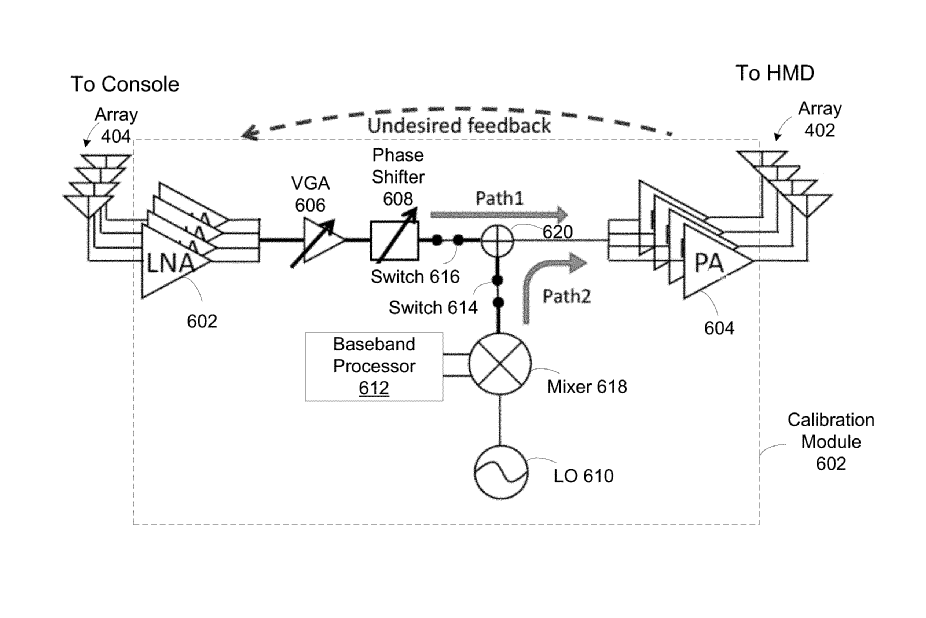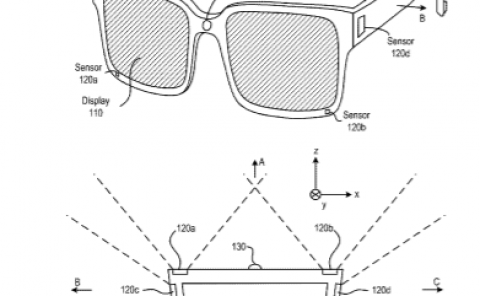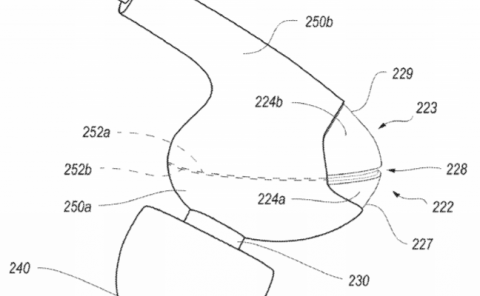Oculus | Relay system calibration for wireless communications between a head-mounted display and a console
Patent: Relay system calibration for wireless communications between a head-mounted display and a console
Publication Number: 10110330
Publication Date: 2018-10-23
Applicants: Oculus VR, LLC

Abstract
A head-mounted display (HMD) is wirelessly coupled to a console or a relay depending on the relative positions of the HMD, the console, and the relay. The HMD communicates wirelessly with the console using a narrow beam that is oriented in a particular direction. As the position of the HMD changes, the quality of the communication link between the HMD and the console may degrades. In response to the degradation, the HMD forms a communication link with a relay, which operates as an intermediary between the HMD and the console. The relay communicates with the HMD over a dedicated communication channel that is isolated from the communication channel over which the relay communicates with the console. A calibration module in the relay iteratively adjusts a noise reduction parameter until the effects of the undesirable feedback are eliminated.
BACKGROUND
The present disclosure generally relates to virtual and augmented reality systems, and specifically relates to a relay system calibration for wireless communications between a head-mounted display and a console.
It is desirable to establish a reliable and fast wireless communication between a console and a head-mounted display (HMD) in a virtual reality (VR) system, an augmented reality (AR) system, a mixed reality (MR) system, or some combination thereof, to, e.g., "cut the cord" between the console and the HMD. A wireless communication based on extremely high carrier frequencies, such as communication based on 60 GHz carrier frequency in accordance with the IEEE 802.11ad standard or the IEEE 802.11ay standard represents a promising technology for achieving reliable wireless experience in VR, AR and MR systems.
A base station (e.g., console) that wirelessly communicates with a client (e.g., HMD) based on 60 GHz carrier frequency employs beam forming to compensate for a path loss and maintain a quality of wireless link above a predetermined threshold value. In some scenarios, the range of the console is limited such that a high quality wireless link cannot be formed or maintained if the HMD moves out of range. Since many VR, AR, and MR systems rely on an experience where a wearer of the HMD can freely move in a large area, the loss or degraded quality of the wireless link makes for a choppy and undesirable user experience.
SUMMARY
Disclosed embodiments support a head-mounted display (HMD) that is wirelessly coupled to a console or a relay depending on the relative positions of the HMD, the console, and the relay. The HMD and the console may be part of a wireless virtual reality (VR) system, a wireless augmented reality (AR) system, a wireless mixed reality (MR) system, or some combination thereof. The HMD communicates wirelessly with the console using a narrow beam that is oriented in a particular direction. As the position of the HMD changes, the quality of the communication link between the HMD and the console may degrade. In response to the degradation, the HMD forms a communication link with a relay, which operates as an intermediary between the HMD and the console.
The relay includes a radio-frequency (RF) circuit that enables bi-directional receive, amplify, and forward functionality of data packets being transmitted between the console and the HMD. Further, the relay uses dual band or dual polarization for connecting and communicating with the console and the HMD. In particular, the relay connects with the console 104 via a first band or a first polarization and connects with the HMD via a second band or a second polarization. In one embodiment, the HMD uses the first band or a first polarization to connect with the console 104 when the relay is not in operation. When the relay is in operation, the HMD uses second band or second polarization to connect with the relay, and the relay uses the first band or the first polarization to connect with the console.
The relay includes two antenna arrays: one configured to communicate with the HMD and the other configured to communicate with the console. As a consequence of these antenna arrays being proximally located, there is undesirably feedback between the two antenna arrays. A calibration module in the relay iteratively adjusts a noise reduction parameter until the effects of the undesirable feedback are eliminated.



